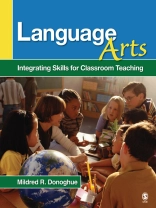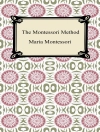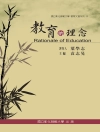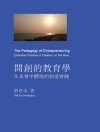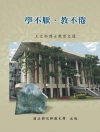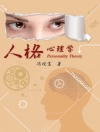Provides a clear and succinct introduction to teaching the language arts to elementary students
Key Features
- Focuses on integrating the six language arts—reading, writing, listening, speaking, viewing, and visually representing—with other subject areas
- Provides guidance on differentiating instruction to bring out the best in the rapidly growing number of students with special needs and English language learners in the regular classroom
- Includes a detailed lesson plan in each chapter along with instructional activities and techniques to integrate the language arts across all the subjects in the elementary curriculum
Accompanied by High-Quality Ancillaries!
Student Resource CD: Bundled with the book, this CD includes video clips and discussion questions that correlate with important chapter concepts.
This interactive study site provides practice tests, flashcards, chapter summaries, links to NCTE/IRA and state-specific Language Arts standards, and much more.
Instructor Resources on CD : Available by contacting SAGE Customer Care at 1-800-818-SAGE (7243), this CD for instructors offers resources such as lecture outlines, Power Point slides, a test bank, and sample syllabi for semester and quarter courses.
Intended Audience
This book is intended for undergraduate and graduate courses in elementary language arts methods, which teaches pre-service teachers and licensure/certification candidates specifically how to teach their students the basics of the six language arts – reading, writing, listening, speaking, viewing, and visually representing.
Table des matières
PART I. FOUNDATIONS OF THE LANGUAGE ARTS
1. Language and the English Language Arts
The Standards for the English Language Arts
Language Arts: Components/Integration
Functions and Characteristics of Language
Language Structure
Language and Thought
Assessment
Working With English Language Learners
Practical Instructional Activities and Ideas
Integration Across the Curriculum
Parents as Partners
Additional Professional Readings
Children?s Literature Cited in the Narrative
References
2. Children as Language Learners and Thinkers
Models of Natural Language Learning
First-Language Acquisition
Second-Language Acquisition
Linguistically Diverse Learners
Positive Language Classroom Environments
Assessment
Working With English Language Learners
Practical Instructional Activities and Ideas
Integration Across the Curriculum
Parents as Partners
Additional Professional Readings
Children?s Literature Cited in the Narrative
References
3. Formal and Authentic Assessment
Principles and Purposes of the Assessment of the Language Arts
Formal Assessment: Standardized Testing
Authentic Assessment: What, Why, and How
Authentic Assessment: Grading
Assessment
Working With English Language Learners
Practical Instructional Activities and Ideas
Integration Across the Curriculum
Parents as Partners
Additional Professional Readings
Children?s Literature Cited in the Narrative
References
4. Integrating Language Arts Across Curriculum
Integration: Definition, Principles, and Benefits
Thematic Units: Overview
Constructing a Thematic Unit
Implementing a Thematic Unit
Assessment
Working With English Language Learners
Practical Instructional Activities and Ideas
Integration Across the Curriculum
Parents as Partners
Additional Professional Readings
Children?s Literature Cited in the Narrative
References
PART II. READING AS A LANGUAGE ART
5. Word Recognition Skills and Vocabulary Development
Word Recognition Skills
Vocabulary Development
Assessment
Working With English Language Learners
Practical Instructional Activities and Ideas
Integration Across the Curriculum
Parents as Partners
Additional Professional Readings
Children?s Literature Cited in the Narrative
References
6. Reading: Principles, Approaches, Comprehension, and Fluency
Principles of Teaching Reading
Emergent Reading
Major Instructional Approaches
Models of Reading
Guided Reading
Comprehension: Categories and Influential Factors
Comprehension Strategies
Questioning: A Critical Comprehension Strategy
Sorting Out Comprehension ?Problems?
Reading in the Content Areas
Fluency
Assessment
Working With English Language Learners
Practical Instructional Activities and Ideas
Integration Across the Curriculum
Parents as Partners
Additional Professional Readings
Children?s Literature Cited in the Narrative
References
7. Reading and Children?s Literature
Literature in Elementary Education: Values and Functions
What Literature Does for Readers and Writers
Children?s Needs and Reading Interests
Criteria and Sources for Selecting Quality Books
Elements of Literature
Literature Genres
Bibliotherapy: Books That Help Children Cope
Living in a Diverse World: Multicultural Literature and International Literature
Instructional Activities
Literature Circles: A Popular Interpretive Activity
Assessment
Working With English Language Learners
Practical Instructional Activities and Ideas
Integration Across the Curriculum
Parents as Partners
Additional Professional Readings
Children?s Literature Cited in the Narrative
References
PART III. WRITING AS A LANGUAGE ART
8. Writing: Process, Genres, and Motivational Strategies
Guidelines for the Teaching of Writing
Factors Affecting Children?s Writing Performance
Emergent Writing
Abilities Needed for Effective Writing
The Writing Process
Writing Genres
Motivational Strategies That Promote Writing
Writing Development Through the Grades
Samples of Children?s Writing
Assessment
Working With English Language Learners
Practical Instructional Activities and Ideas
Integration Across the Curriculum
Parents as Partners
Additional Professional Readings
Children?s Literature Cited in the Narrative
References
9. Writing Tools: Handwriting, Keyboarding, Spelling, and Grammar
Handwriting and Keyboarding
Spelling
Grammar
Assessment
Working With English Language Learners
Practical Instructional Activities and Ideas
Integration Across the Curriculum
Parents as Partners
Additional Professional Readings
Children?s Literature Cited in the Narrative
References
10. The Writers? Workshop
Essentials of the Workshop
Implementing Writers? Workshop
First Major Component of the Workshop Session: Focus Lessons
Second Major Component of the Workshop Session: Independent Writing Time
Third Major Component of the Workshop Session: Share Time
Assessment
Working With English Language Learners
Practical Instructional Activities and Ideas
Integration Across the Curriculum
Parents as Partners
Additional Professional Readings
Children?s Literature Cited in the Narrative
References
PART IV. ORAL LANGUAGE ARTS
11. Listening and Speaking
Listening
Speaking
Assessment
Working With English Language Learners
Practical Instructional Activities and Ideas
Integration Across the Curriculum
Parents as Partners
Additional Professional Readings
Children?s Literature Cited in the Narrative
References
12. Creative Drama
Benefits of Creative Drama
Qualities and Components of Creative Drama
Major Types of Creative Drama
Assessment
Working With English Language Learners
Practical Instructional Activities and Ideas
Integration Across the Curriculum
Parents as Partners
Additional Professional Readings
Children?s Literature Cited in the Narrative
References
Appendix: Technology Connections for the Language Arts
Index
A propos de l’auteur
Mildred R. Donoghue is a Professor of Education and Reading at California State University, Fullerton. She teaches courses in the Multiple Subject Credential Program and in the Master′s program in Elementary Curriculum and Instruction (emphasis: Early Childhood Education). She is a member of Alpha Upsilon Alpha Honor Society of the International Reading Association. Donoghue has published nine books to date in the language/literacy field, the latest being Language Arts: Integrating Skills for Classroom Teaching (SAGE). She serves on the editorial review board of the Journal of Children′s Literature (NCTE) and The Dragon Lode (IRA) and has established the Donoghue Children′s Literature Center at the University Library at Cal State Fullerton. Her work as supervisor of elementary student teachers allows her to visit public classrooms and maintain currency in her preparations and writing.
